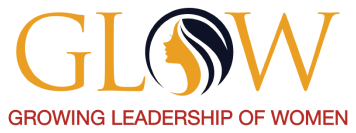
Diversity and Inclusion in a hybrid world: The pandemic and beyond
The business case for diversity and inclusion was made a long time ago. Almost every research done by the Big 4 consulting companies have made emphatic statements on the positive impact of diverse and inclusive organizations. Leaders across the globe do not pass up an opportunity to amplify the decibel levels on the matter. There is no doubt that organizations that are still pussyfooting on the subject, are likely to miss out on a competitive advantage in the years ahead.
However, just as the world was beginning to understand its benefits; there came a spanner in the works. The pandemic pushed it to the back burner as more urgent matters on employee wellbeing, business imperatives and consolidation of the work force were prioritized.
IMPACT OF THE LOCKDOWN
- A One pulse survey of D&I leaders, found that 27 percent of them report that their organizations have put all or most inclusion and diversity initiatives on hold because of the pandemic.
- Almost 7 times more women than men lost jobs. Support function downsizing led to a drastic drop in gender diversity in organizations.
- Work life balance went into a tail spin. Studies reflect how women were more stretched physically and emotionally as compared to their male counterparts. Even though 1 out of 3 men took on more household chores, the heavy lifting continued to be done by women. Women were putting in a double shift- with the quantum of domestic chores and childcare having gone up significantly. Guided by their natural instinct most women took on more domestic responsibilities even when there was no expectation for them to do so. “It was exhausting but I just felt responsible for keeping my house in order even as I focussed on my work” remarked Neeraja Ganesh, a mother of a grown-up child and a strong gender diversity advocate.
- Emotional anxiety saw a sharp rise even among those who are otherwise resilient. A senior marketing director at an FMCG company complained of how taxing it was to rely heavily on his listening ability. “In face-to-face meetings one would pick up physical cues as feedback to the conversation.” In a virtual world, I am constantly guessing. You have no clue what’s happening behind the dark screen. One can’t insist on keeping videos on either. “I just increased the number of meetings with my team to ensure they were doing alright but it took a toll on me!”
- In the initial days of the pandemic, organizations experienced a sudden spurt in productivity. Employees were putting in more hours of work. The turnaround time for decisions shortened. “Teams were always available- there was no start or end time” an HR head mentioned.
The ADAPTATION:
However not all organizations let go off their reins on diversity and inclusion initiatives. Several business and HR leaders demonstrated alacrity in transitioning to a virtual world.
- Sustaining the organization culture became a priority for leaders. Even at the cost of more meetings, structures were set up to ensure that the culture did not sag. A culture orientation by the CEO, followed by meetings with HR and business leaders ensured that new joinees were well onboarded into the ethos of the organization. “Candidates were getting welcomed several times through different touch points. This has helped in a sense of inclusion.” Ashwani Kumar HR consultant, Ex HR head of Srijan Technologies
- “We used the slowdown as an opportunity to realign ourselves to newer business units. Secondly, we upskilled our internal talent and moved them into new roles. Our commitment to D&I continued with WForce- a curated program for women. With increased communication, trust, camaraderie and collaboration has improved in these times.” Kanchan Behal, HR head Bata India remarked with pride.
- At Schindler India, the emphasis on training, particularly D&I was stepped up. A thematic focus on inclusion saw a slew of activities such as yammer campaigns, relevant movie screenings. women connect calls on developing a critical skill. There was no hesitation is launching ‘Be an Ally’ program as an e learning module. June was celebrated as Pride month with much gusto. “The biggest change has been to see business leaders driving inclusion and diversity and not just HR.” observed Rosmin Paul, GM Talent development, Schindler India.
THE REALITY
While a handful of organizations ensured that the momentum on inclusion and diversity is kept intact, the reality is that we are far from our intended goals.
- An Oxfam India report predicts that women who were employed before lockdown are also 23.5% points less likely to be re-employed as compared to men in the post lockdown phase.
- In a pre-pandemic era, studies showed that 87% of global businesses place D&I as an organizational priority. Yet only 37% of the businesses surveyed tasked their leaders with D&I goals and 42% still admit that it is a barrier to employee progression. In light of the pandemic these figures have declined further.
- Studies have demonstrated the strong correlation between psychological safety, and an innovative agile organization. Yet a McKinsey Global Survey conducted during the pandemic confirms that only a 43% of business leaders often demonstrate the positive behaviours that can instil this climate, termed psychological safety, in their workforce.
https://www.mckinsey.com/business-functions/organization/our-insights/psychological-safety-and-the-critical-role-of-leadership-development#. Even as some leaders demonstrated empathy and compassion, several managers struggled with balancing business priorities with an authentic people orientation. A female employee in an insurance company complained how ruthless her boss had been when it came to taking leave for her husband’s covid treatment. To quote her- “he said he understood my light, but also expected that deliverables get met. I am under a lot of pressure now and I don’t think he gets me.” Shruti (name changed), a partner in a law firm was expected to work even as she was recovering from covid.
THE FUTURE
There is urgency to step up efforts to make up for what we have lost during the pandemic.
The future holds out a shiny promise for D&I; provided organizations demonstrate a strong intent and swiftness in action. A few trends that will define the way forward.
- Back to work programs for returnee mothers/women on a hiatus will see a huge impetus as flexi work from home options will open up for them.
- One on one mentoring to support personal transformation and professional excellence. In the recent past, a whole host of online platforms have sprung up that provide access to highly skilled mentors for business, career planning, personal development across the globe. BetterUp has the endorsement of none other than Prince Harry. As its Chief Impact Officer, the Duke of Sussex is committed to unlocking potential and opportunity by focussing on mental fitness. In India, women have access to several platforms such as JobsforHer, Sheroes, AspireforHer, WIT-Ace that provide upskilling and employment opportunities. According to Indy Banerjee, Partner Mc Kinsey &Co, “Gender diversity and inclusion would be better served when there is access to the CXO teams. This will give them the much-needed visibility to progress their career path. A well-planned career track would help in containing attrition to a great degree.”
- The small and medium sector enterprises suffered a massive blow to their business and are not very inclined to invest in fostering a diverse culture. Business priorities will override their decisions related to diversity at least in the short term. The onus for hiring and developing diverse talent would rest with larger organizations.
- Use of technology to facilitate learning will increase. A combination of asynchronous and instructor led facilitation will define the way learning programs are consumed.
- “A key part of an organization culture will be to have role models that demonstrate compassion and care. This is who we are and we need to show this to millennials. “Noted Krish Shankar, Group Head HR, Infosys
- Employees will value small group sessions that provide space for intimate sharing and deep connections. At Growing Leadership of Women, GLOW (www.glowforall.com) we saw the catharsis that came with the release of pent-up emotions in our Resilience Coaching Circles for women. “It’s difficult to share personal experiences in a large and diverse gathering” felt Anubha, a senior developer in an IT company. Particularly in a hybrid work culture the social capital will be defined by the strength of relationships across functions.
LEVERS FOR ACCELERATION
Business and D&I leaders need to activate levers that can accelerate D&I efforts.
- Define clear metrics for D&I. As of now organizations are responding to client expectations or parent company directives. In order to keep up with the Joneses, some feel compelled to demonstrate their commitment on milestone occasions such as Women’s Day. Such efforts are short lived without much tangible result in the long run. Setting concrete goals and measuring its impact would provide more rigor.
- There isn’t much historical quantitative and qualitative evidence in an organization to reflect the strong correlation between diversity and financial performance. The depth of conviction arises from a direct experience of its benefits. In its absence most managers see it as a superfluous frill rather than a necessity.
- The pain of managing diversity in teams is felt most by middle managers. “It’s an extra responsibility for me to ensure the safety of women at site” was a genuine complaint of a field supervisor in an engineering company. When it’s seen as an additional burden, the push back to hiring and developing a diverse team is high. The organization needs to support managers in addressing some of these on ground challenges rather than it be their sole responsibility.
- Managing the millennial mindset is going to be a daunting task for managers. They hold a tall ask of their managers when they seek autonomy, empathy, flexibility, meaning, professional growth. An HR head of an FMCG company complained that getting women to stay was not easy. “There is investment in training and energy spent in aligning business leaders and these girls just quit at the drop of a hat.” We possibly need magician managers who have a full range of aces up their sleeve when it comes to building an enabling and inclusive culture for diverse millennials.
“Inclusion and diversity are at risk in a crisis but are critical for business recovery, resilience and reimagination” Mc Kinsey. As businesses roll back to a normalcy, there is hope in the resurgence of D&I efforts and acceleration in the right direction to truly reap its transformative power.
